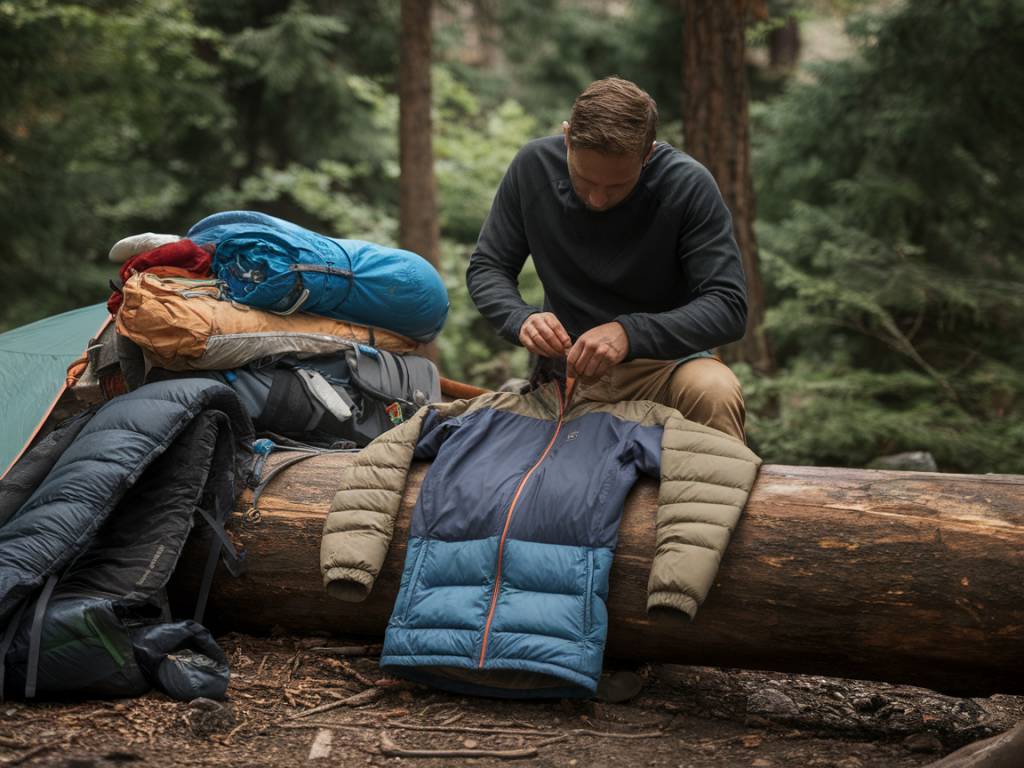Why Maintaining Your Outdoor Gear Matters
Let’s be real – outdoor enthusiasts know the bond we form with our gear. It’s our trusty companion, our shield against the elements, and often a financial investment that deserves to last. But how often do we really think about the wear and tear it endures? From rugged trails to unpredictable weather, your equipment takes a beating. Maintaining it not only extends its life but ensures your safety and comfort on your next adventure. After all, would you want a frayed strap or leaky tent ruining a perfectly good trip?
Inspect Your Gear Regularly
Ever heard the saying, « Prevention is better than cure »? Well, it applies just as much to your trusty hiking boots as it does to personal health. Performing regular gear checks helps you catch problems early before they escalate. Here are a few things to keep in mind during your inspections:
- Look for tears or weak spots in fabrics like tents, backpacks, and clothing.
- Check zippers, buckles, and straps to ensure they’re functioning correctly.
- Inspect metal components (like poles and tools) for rust or other damage.
- Don’t forget footwear – inspect soles, seams, and laces regularly.
Make it a habit to run a quick check after every trip. A few minutes of your time can save you from unpleasant surprises when you’re miles from the nearest trailhead.
Cleaning Is Key
Let’s face it: outdoor adventures are messy, but your gear doesn’t have to stay that way. Cleaning maintains your gear’s appearance and performance, especially items like waterproof jackets, sleeping bags, and hiking boots. Here’s how to tackle the dirt and grime:
- Packs: Empty your backpack, turn it inside out, and shake off dirt. For stubborn grime, a sponge and mild soap can work wonders.
- Clothing: Follow care labels religiously. For waterproof gear, use specialized detergents to keep DWR coatings intact.
- Shoes: Brush off mud and debris before it hardens. If needed, rinse them lightly with water, but avoid soaking them for extended periods.
- Sleeping Bags: Wash in cold water with gentle soap and dry thoroughly. Pro tip: Use tennis balls in the dryer to maintain its loft.
Clean gear not only lasts longer but works better – especially items designed to repel water or keep you warm.
Master Basic Repairs
Outdoor enthusiasts are nothing if not resourceful, and knowing how to perform basic repairs can be a lifeline on the trail. Here are a few skills every adventurer should have in their toolkit:
- Patching Tears: For tents, jackets, or backpacks, use repair tape like Tenacious Tape to seal rips instantly. It’s a game-changer.
- Replacing Buckles or Straps: A broken buckle is no reason to abort a trip. Pack spare buckles or DIY a temporary fix using duct tape and cord.
- Seam Sealing: Got a leaking tent or rain jacket? Keep some seam sealer handy and reapply it as needed.
- Fixing Zippers: Use pliers to gently adjust a misaligned zipper or replace the slider entirely if necessary.
For those uncertain about tackling repairs, many gear companies or outdoor supply shops offer repair services to extend the life of your equipment professionally.
Waterproofing and Protection
Weatherproofing helps your gear retain its resilience against rain, snow, and dirt. Over time, waterproof coatings on boots, backpacks, and jackets degrade. Here’s how to reapply and protect:
- Waterproof Spray: Invest in sprays designed for your specific gear type. Clean the surface thoroughly before applying for maximum effectiveness.
- DWR Coatings: If your rain jacket starts soaking up water, it’s time to refresh the durable water repellent (DWR) coating. Use a dedicated wash-in or spray product for best results.
- Wax for Leather: Leather hiking boots last longer with regular applications of wax or water-resistant treatments to keep them supple and strong.
By keeping your gear weather-ready, you’ll not only extend its lifespan but also ensure a dry, comfortable experience during your travels.
Store Strategically
How you store your gear when not in use is just as important as how you use it. Avoid haphazard stuffing or shoving it into cramped spaces, as improper storage can lead to permanent damage. Here’s how to do it right:
- Tents: Don’t store your tent while it’s damp – mildew is your worst enemy. Let it air out completely before packing it loosely in a dry spot.
- Sleeping Bags: Avoid compressing your sleeping bags for long-term storage. Use a loose sack or hang it instead.
- Clothing: Don’t leave clothing crumpled in a bag. Hang items like jackets or fold them gently in a cool, dry closet.
- Footwear: Store boots in a well-ventilated area away from intense heat to prevent cracking or deformation.
Treat your gear like a cherished ally – it deserves a proper resting place so it’s ready for action next time.
Know When to Call It a Day
Despite our best efforts, even the most rugged gear has a limit. Sometimes, retiring a piece of equipment is inevitable. If safety or functionality is compromised beyond repair, it’s time to invest in a replacement. However, don’t rush to throw things away – many outdoor brands now offer recycling or trade-in programs for used gear, offering a sustainable way to part with your old favorites.
Gear Care Equals Adventure Preparedness
Taking care of your equipment isn’t just about saving money – it’s about feeling confident and prepared for the great outdoors. By regularly maintaining, cleaning, and repairing your gear, you’re setting yourself up for adventures that are safer, more comfortable, and more enjoyable. Plus, who doesn’t love showing off a jacket that’s weathered more storms than your local café umbrella?
So, the next time you’re prepping for a trip or unpacking after a weekend in nature, remember: a little TLC for your equipment goes a long way. Happy trails!

